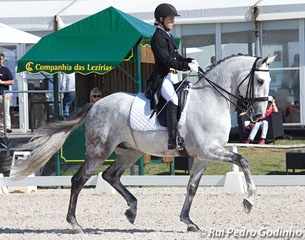
It is easy to unconsciously avoid certain elements of training on a daily basis. Over time this causes major problems. We tell ourselves that we are just not going down the other end of the school because we are working on a smaller area, knowing full well that our horse often spooks at the chair, tree, nothing at the other end.
We tell ourselves that we don’t feel like working on the pirouettes today, knowing that when we begin them our horse gets often more excited and can start to play and we get nervous. We avoid the half pass right because the half pass left is so lovely, so it’s better to do that twice, and then it’s done. We go into a nice trot, and forget about transitions, because it just feels so good we want to keep it, so we go around and around, until we lose it and then wonder what happened.
It is natural if you aren’t a typically bold rider to avoid or even aim to prevent, or protect yourself against any sort of spook, jump, buck, or jolt, that might cause you unease.
However, avoiding that often causes the problem to grow exponentially, until we are avoiding almost every part of the arena, the wind, the walk down, the canter in general because that can cause more spook, the flying changes because he might buck, the half pass because he might trip etc etc.
This is not training unfortunately, and the more things we avoid, windy days, rainy days, corners, or exercises, the more we restrict ourselves as riders, and also force our horse to be afraid and more tense in general for the lack of variety and experience.
Nuno Oliveira said that, “after a defence (spook, etc) put the horse back immediately where the defence occurred.” This is true, but often riders either go as far away from whatever spooked the horse, or fight with the horse to go directly towards it. Both are wrong!
The second thing people do when a horse is tense is to just go forward. This can sometimes help, but the problem is that riders go forward and then forget to introduce new things, new transitions, circles, things that get the horse's attention back on us.
“Never let a horse that is resisting, walk on a straight line,” said Nuno Oliveira. Nuno explained that knowing that a horse on a straight line has all the control, whereas a horse engaged in lateral exercises, is a horse that is being guided by his rider.
A rider must learn to not avoid or remain in their safe zone, but constantly search to expand their area of comfort, in order for the horse to become supple as well as mentally experienced and wise.
A rider that avoids transitions, or corners, or rain, or wind, or that chair over there, ends up with a horse who avoids everything he knows the rider will not make him do, a horse that is equally afraid, that lacks both the confidence and the determination to push out of his comfort zone, and give his all to his rider.
by Sarah Warne - Photo © Rui Pedro Godinho